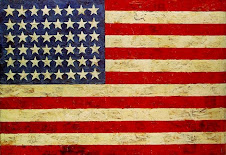
For your final project of the year you will be composing a two page achievement-focused biography on a prominent figure from the 1960s or 1970s.
In order to get you ready for writing the paper, prepare a blog or creative assessment answering TWO of the questions that you must prep for the interview (answer them in first person in a blog, diary entry, video interview or any creative format you like, must be 200 words):
1. What achievements in your life are you most proud of?
2. Identify one decision or experience from your life that you truly regret.
3. If you could meet anyone from history (fact or fiction), who would it be and why?
(Ms. Francis)
4. What are your views on the a) civil rights b) feminist c) anti-war movement?
CITE YOUR SOURCES!!!
Blog due Saturday, 5/31
Paper/ Project Due Tuesday, 6/3
Paper/ Project Requirements:
A biographical blog, paper or creative assessment (poster, scrapbook, powerpoint, etc.) identifying the key achievements and enduring impact of the person you selected - at least 300 words PLUS three works cited in MLA format. (One must be a primary source.)
Additional notes for speed dating are fine.
This will be a project grade so dress the part. (+10!)
Rubric:
Paper will be worth 40%, graphic organizer 30% and blog/ notes for the dates 30%
Choices for your leader include: (YOU MUST SIGN UP ON MY DOOR SO WE DON'T HAVE DOUBLES)
Civil Rights - Martin Luther King, Jr. Ella Baker, Jim Zwerg, Medgar Evers, John Lewis, Fannie Lou Hamer, Angela Davis, Malcolm X, Jo Ann Gibson Robinson, Rosa Parks
Women's Rights - Gloria Steinem, Betty Friedan, Rachel Carson, Margaret Chase Smith
Political Leaders - John F. Kennedy, Robert "Bobby" Kennedy, "Bull" Connor, Jacqueline Kennedy Onasis, Dwight Eisenhower, Lyndon Johnson, George Wallace, Richard Daley
Latin American and Chicano Rights - Feliepe Luciano, Denise Oliver, Cesar Chavez, David Sanchez
American Indian Movement Leaders- Leonard Peltier, Maxine Hong Kingston
Black Power Leaders- Stokley Carmichael, Hewey P. Newton, Elaine Brown
Counter culture leaders - Abbie Hoffman, Patty Hearst, Joan Baez, Bob Dylan, Joni Mitchell,
Joan Baez, Allen Ginsberg, Tim Leary
Gay Rights Activists - Harvey Milk, Craig Rodwell, Brenda Howard
